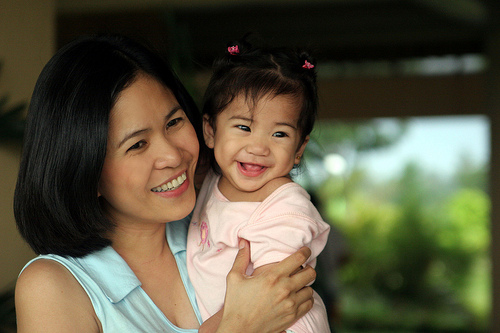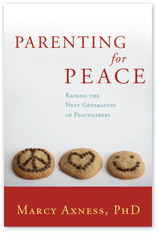 “Building a strong foundation for healthy development in the early years of life is a prerequisite for individual well-being, economic productivity, and harmonious societies around the world.”
“Building a strong foundation for healthy development in the early years of life is a prerequisite for individual well-being, economic productivity, and harmonious societies around the world.”
So reads the opening line of one of the most important articles published this year that you will most likely never read or even hear about. The article, entitled “An Integrated Scientific Framework for Child Survival and Early Childhood Development,” was published in a recent issue of Pediatrics, the prestigious journal of the American Academy of Pediatrics.
Not exactly bedside table reading. Or what’s tops on your Kindle. The average American is more familiar with Jennifer Aniston’s tenacious search for love than with the extensive evidence that the long-term developmental consequences of early “deprivation, neglect, or social disruption can create shocks and ripples that affect generations, not only individuals, and have significant impacts that extend far beyond national boundaries.”
Yeah, the 15-page article isn’t exactly jam-packed with snappy soundbites. But it could not be more crucial. Lead author Jack Shonkoff and his colleagues distill decades of research about the lifelong worldwide impact of the nature of each child’s earliest beginnings into such key points as:
- Brain plasticity and the ability to change behavior decrease over time, so getting things right the first time is less costly, to society and individuals, than trying to fix them later.
- Although manageable levels of stress are normative and growth promoting, toxic stress in the early years (ie, the physiologic disruptions precipitated by significant adversity in the absence of adult protection) can damage the developing brain and other organ systems and lead to lifelong problems in learning and social relationships as well as increased susceptibility to illness.

- The interaction of genes and experiences literally shapes the circuitry of the developing brain, and is critically influenced by the mutual responsiveness of adult-child relationships, partic- ularly in the early childhood years.
- The architecture of the brain is constructed through an ongoing process that begins before birth, continues into adulthood, and establishes either a sturdy or a fragile foundation for all the health, learning, and behavior that follow.
The article says in more complicated language what my new book Parenting for Peace proposes as its central tenet: when our babies and children experience stress that is too frequent and/or too severe, this throws their systems into “protection / survival mode,” which impairs brain development – particularly the neural circuitry required for robust social intelligence.
The AAP sees this situation as so dire that they took the additional measure (rare for them) of issuing a policy statement, highlighting the “powerful role that toxic stress can play in disrupting the architecture of the developing brain, thereby influencing behavioral, educational, economic, and health outcomes decades and generations later.”
They define toxic stress as “excessive or prolonged activation of the physiologic stress response systems in the absence of the buffering protection afforded by stable, responsive relationships.”
What the Heck IS “Toxic Stress”?
What does toxic stress look like on the ground? It can look dire and dramatic, but it can also look like what goes on in most well-meaning, even loving, homes in the guise of discipline — often first starting around the time a child begins to walk (and thereby gets into everything). As I write in Parenting for Peace,
Research shows that the typical child of this age, newly toddling about to discover her world, is met with an emphatic “No!” every nine minutes. Just one such “inhibiting directive” that so naturally rolls off parents’ tongues can raise a child’s level of the stress hormone cortisol for twelve hours. Joseph Chilton Pearce points out that cortisol is one of the most neurotoxic substances known to man: it kills brain cells. It also drastically suppresses immune function, as most of us know all too well from falling ill after a bout of stress, especially some severe disappointment. Cortisol is one of the primary information substances that instruct the bodymind to shift from growth mode into protection mode.
In a nice stroke of timing, the Washington University School of Medicine just released study results proving that in contrast to such harsh or shaming “inhibiting directives,” a mother’s nurturing (what the AAP might call the “buffering protection” of her stable responsiveness) helps her child grow a more robust brain.
This is the first solid research evidence linking a nurturing parent to changes in brain anatomy. The study found that school-age children whose mothers nurtured them early in life have brains with a larger hippocampus, a key structure important to learning, memory and response to stress. (Part of the complex circuitry devoted to what I call “peacemaker” capacities, such as self-regulation, self-reflection, empathy and emotional flexibility.)
“This study validates something that seems to be intuitive, which is just how important nurturing parents are to creating adaptive human beings,” says lead author Joan L. Luby, MD, professor of child psychiatry. “I think the public health implications suggest that we should pay more attention to parents’ nurturing, and we should do what we can as a society to foster these skills because clearly nurturing has a very, very big impact on later development.”
Later development of individuals… of communities… of nations… races… and ultimately, of our shrinking, shared world. World peace doesn’t spring fully formed. It begins with womb peace. Then birth peace. Then infant peace. Mommy-and-Daddy peace, teacher peace and so on, rippling outward.
When are we going to move beyond media-fueled fascination with the nationality-parenting flavor-of-the-month and realize that how we show up as parents has ultimate implications for us as a global family?
Isn’t it time we embrace an evidence-based style that can actually build better brains — a style that can quietly, joyfully, change the world?
Sources:
Shonkoff, Jack P, Linda Richter, Jacques van der Gaag, and Zulfiqar A Bhutta. “An Integrated Scientific Framework for Child Survival and Early Childhood Development.” Pediatrics DOI: 10.1542/peds.2011-0366 (2012).
Kristof, Nicholas. “A Poverty Solution That Starts with a Hug.” New York Times (Jan. 7, 2012).
Dryden, Jim. “Mom’s love good for child’s brain.” Washington University, St. Louis (Jan. 12, 2012).
Images (in order) by:
Lisa Pflaum used with permission
din! used under its Creative Commons license
Johnath used under its Creative Commons license
lednichenkoolga used under its Creative Commons license
________________
Marcy Axness, PhD, is the author of Parenting for Peace: Raising the Next Generation of Peacemakers.
Tags: American Academy of Pediatrics, brain development, discipline, epigenetics, interpersonal neurobiology, nurturance, stress, toxic stress



